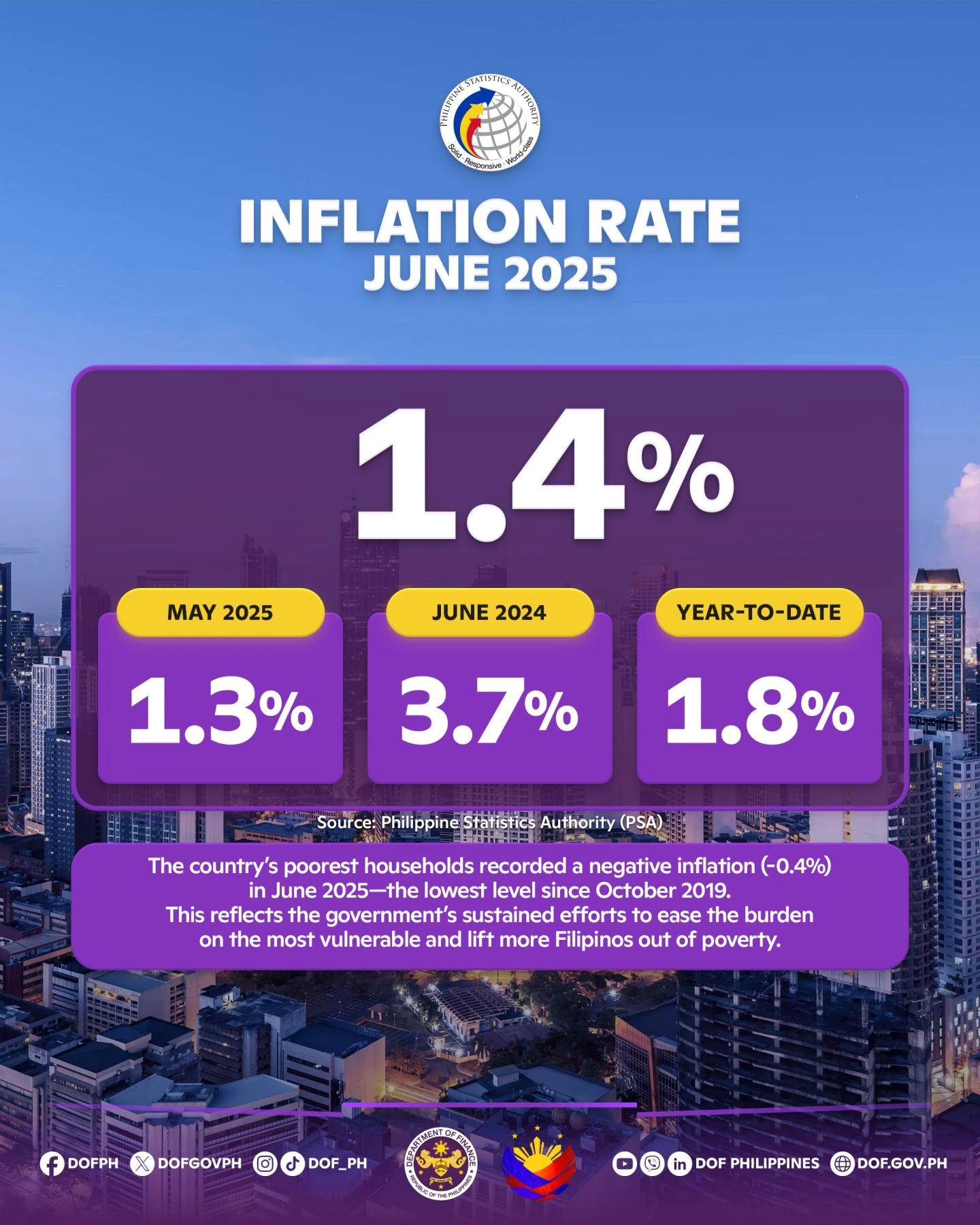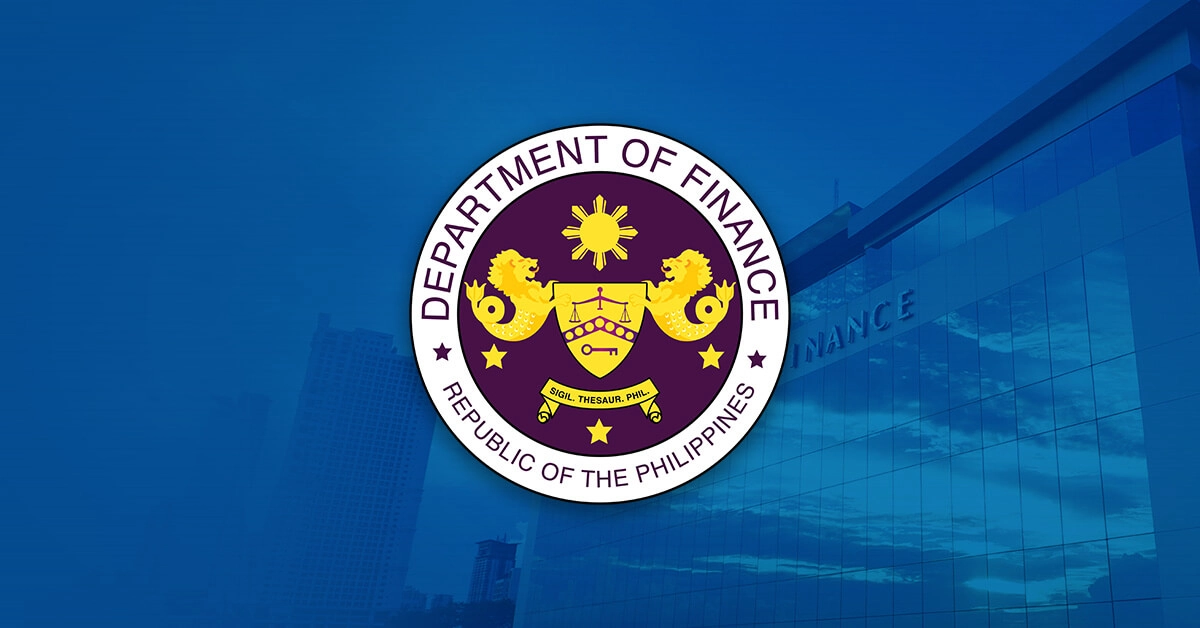The country’s bottom 30% income households recorded a deflation of -0.4% in June 2025—the lowest level since October 2019—reflecting the government’s sustained efforts to ease the burden on the most vulnerable and lift more Filipinos out of poverty.
This brought the overall headline inflation rate to 1.4% in June 2025. Year-to-date, the inflation rate stood at only 1.8%, well below the government’s target range of 2% to 4%.
“Magandang balita po ito sa lahat. Ibig sabihin, mabisa ang mga hakbang ng gobyerno para panatilihing mababa at abot-kaya ang presyo ng mga bilihin lalo na para sa mas higit na nangangailangan. Hindi rin po lingid sa ating kaalaman na marami pa rin sa ating mga kababayan ang nagugutom, ayon sa SWS survey. Kaya mas lalo pa naming paiigtingin ang aming mga ginagawa para maiahon ang bawat pamilyang Pilipino sa kahirapan,” Finance Secretary Ralph G. Recto said.
Food inflation—a key driver of household spending—significantly slowed to 0.1% in June 2025, from a high of 6.5% in the same period last year, offering welcome relief especially for low-income families.
The lower food inflation was mainly brought by year-on-year decreases in the prices of vegetables, rice, corn, and sugar; as well as a slower increase in the prices of ready-made food and other food products.
Rice prices, in particular, saw a historic decline of 14.3% in June 2025—the sharpest drop recorded since 1995. This marks a significant reversal from the 22.5% surge in rice inflation a year ago, and an improvement from the -12.8% recorded in May.
Despite easing inflation, the government remains watchful of potential price pressures, especially from higher electricity rates, pork prices due to the African Swine Fever (ASF), housing rentals, and inflation in restaurants, cafés, and poultry meat.
Whole-of-government interventions to protect Filipinos’ purchasing power
To ensure that Filipinos continue to enjoy affordable rice, the government is continuously implementing the reduced rice tariff and lowering the maximum suggested retail price (MSRP) on imported rice to PHP 43/kg beginning July 16.
Through the Department of Agriculture’s (DA) “Benteng Bigas, Meron Na!” (BBM Na!) program, affordable rice is reaching low-income families and overseas Filipino workers (OFWs) while boosting demand for locally produced rice and dairy.
At the same time, the government is rolling out PHP 29/kg of rice through a nationwide partnership between the National Irrigation Administration (NIA) and local government units (LGUs), which is sourced directly from local farmer cooperatives to guarantee fair prices for both producers and consumers.
To further protect the interests of local farmers, the National Food Authority (NFA) is tightening procurement rules for palay to ensure greater transparency and accountability.
On the fisheries front, the Kadiwa ng Bagong Bayaning Mangingisda (KBBM) program will enhance market access and stabilize supply, providing a lifeline to both fisherfolk and consumers.
To improve agricultural logistics, the government has approved a PHP 27.7-billion farm-to-market bridge program and intensified anti-smuggling operations under the new Anti-Agricultural Economic Sabotage Act, while expanding KADIWA to link farmers directly with consumers.
In case of a fuel price hike due to geopolitical tensions, the government is ready to roll out fuel subsidy programs for various sectors to ease the burden of those most affected.






